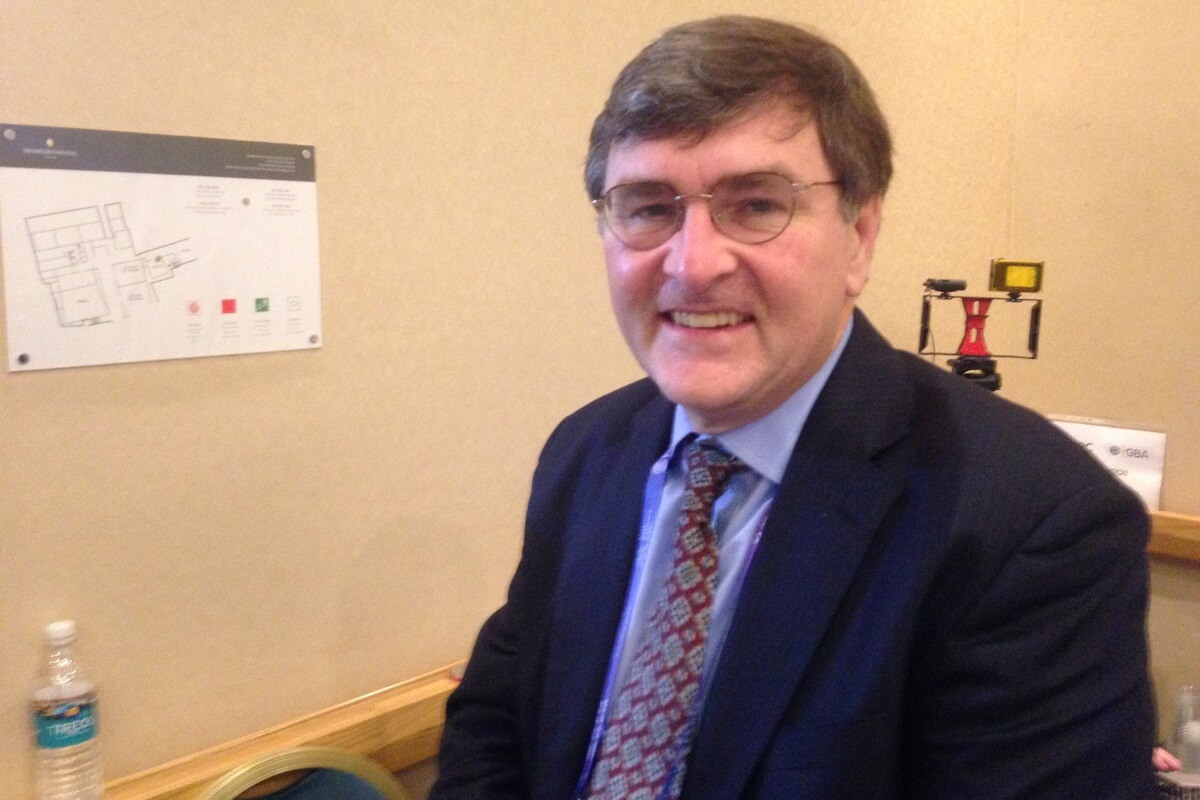

Who is Satoshi Nakamoto? Many believe it’s Nick Szabo, Craig Steven Wright or Scott Stornetta. Coin Rivet had the chance to interview the latter, one of two founding fathers of the blockchain, at Malta Blockchain Summit this week and we had to ask him the question. He answered us in Japanese.
“Sorry, Scott, could we conduct this interview in English?”, we asked, quickly realising he was trying to make a point.
“I speak Japanese, and I write in Japanese, and this has led so many people to believe I’m Satoshi Nakamoto,” Stornetta said. “I just did that for effect because many people have asked me if I’m Satoshi seeing as half of the footnotes in the Satoshi whitepaper are to my work, but what I just said is that I’m not Satoshi, and no I’m not going to tell you who is.”
“Whoever he is, she did great work,” he added.
We asked Stornetta to clarify this statement and if he was playing us and he laughed and replied: “You’re making me look better than I am… but I’ll stand by that statement… whoever he is, she did great work.”
Stornetta went on to address the blockchain, its inception and how it has become way more significant and promising than initially thought.
A world-renowned cryptographer, along with his colleague Stuart Haber, he invented the blockchain as a chronological chain of hashed data in 1991 when the use cases for the technology were a lot less ambitious.
“Stuart and I envisioned the technology as a way to timestamp digital documents to verify their authenticity,” he said.
As Haber and Stornetta detailed in a paper published in The Journal of Cryptography, the ability to certify when a document was created or last modified is crucial for resolving things like intellectual property rights.
Stornetta continued: “The first thing I want to point out is I co-invented blockchain. Stuart Haber, my colleague, was the crucial cryptographic component. Also, none of us called it the blockchain at the time, even though what we built was this system of interlink blocks that were widely distributed, that created an immutable record. It was a chain of blocks distributed, but we didn’t call it a blockchain or a distributed ledger.”
He added: “I think it’s important to understand that many, many people following on us and building on that foundation have created all sorts of value on top of that, for which I’m not trying to take any credit. I’m just grateful to have been part of the early stages and laying the foundation.”
When Stornetta and Haber came up with their idea, they didn’t realise how significant it would become. However, “once you have shared the immutable record with the whole world as a witness to it, they are an amazing set of things that you can do connected with decentralising power and capital. And by distributing the trust, there’s just an enormous kind of palette of opportunities to work with.”
Stornetta began sensing a “taste of the future” when working at the Xerox Palo Alto, California research centre a long time ago… “back in the eighties. And it was there I realised that all the world’s documents were going to be digital and there would be no way to tell the difference between a tampered document and an original one and that somehow we needed to be able to create truly immutable records.”
He felt at the time that “civilisation as we know it would collapse. And I know that’s a little melodramatic, but that was the level of anxiety I had about the issue.”
After graduating from Stanford University with a PhD in Physics, Stornetta mett Haber at the Bell Communications Research lab and told him “this is going to be an enormous problem. If we could get this solved before the smart people realise that the problem needs to be solved, then maybe we could do something.”
“Foolish enough or hopeful enough, Stuart agreed to work with me”, and that’s when blockchain began its inception in search of a way to prevent people from colluding to take wrongfully advantage of the situation. But how exactly do you stop people from colluding?
“We figured out (in late fall of 1989) a way to not have to trust anyone, but that was a red letter day in our family. We’d been constructing all of these proofs that showed how you could prevent three people from colluding by having a fourth person involved and for people from colluding by having a fifth person involved. However, we realised that this meant that the only way to prevent people from colluding was to have a conspiracy so large that it would involve everyone in the world.”
And thus, blockchain was born.
Denver, Colorado, 24th February 2025, Chainwire
Denver, Colorado, 20th February 2025, Chainwire
Washington, D.C., 18th February 2025, Chainwire
Dubai, UAE, 27th January 2025, Chainwire
Those who enter the market at this time may be surprised to hear that Bitcoin…
George Town, Grand Cayman, 22nd November 2024, Chainwire